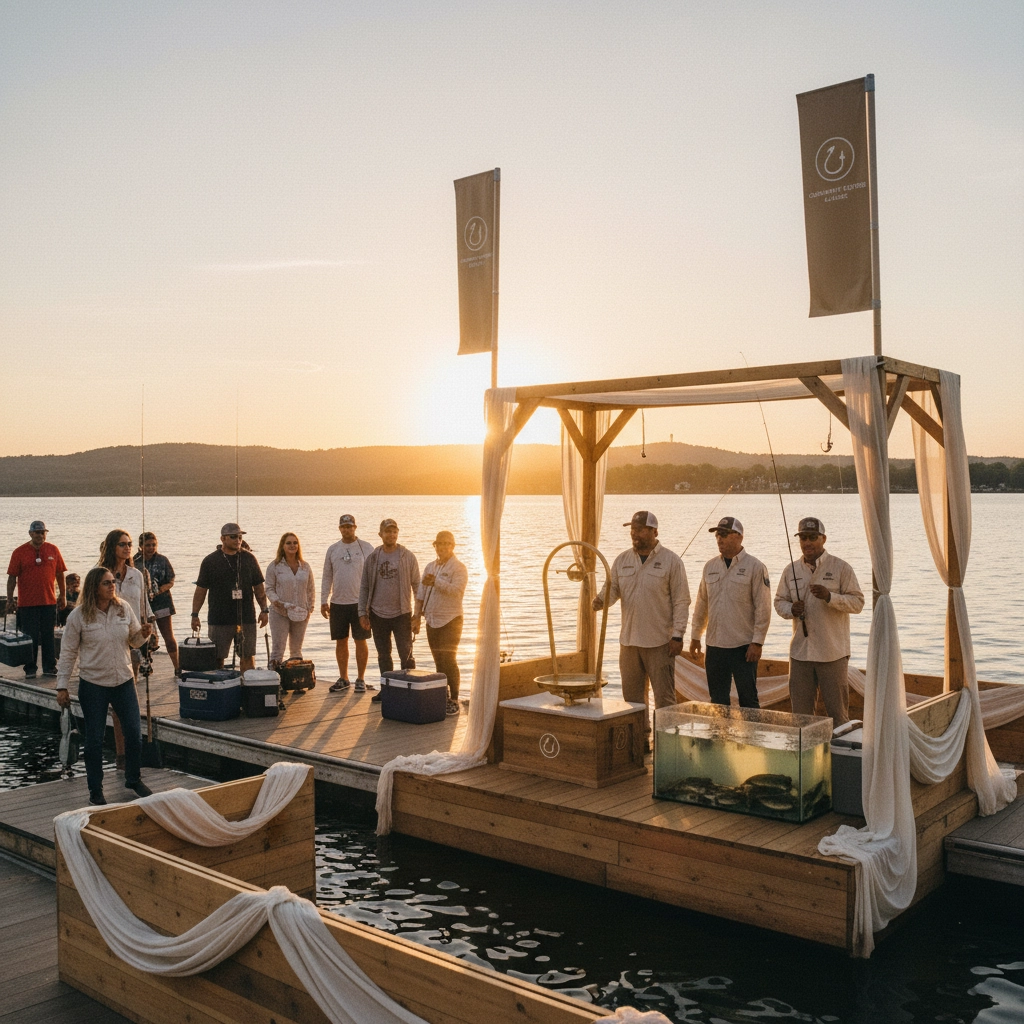Running a national nonprofit is like being the conductor of an orchestra where half the musicians are in Seattle, the other half in Miami, and they're all playing different sheet music. Sound familiar? If you're nodding your head while simultaneously reaching for more coffee, you're not alone.
The dream is beautiful: a coordinated symphony of events happening simultaneously across the country, each one perfectly aligned with your mission while still feeling authentically local. The reality? Well, let's just say it often looks more like a middle school band recital than Carnegie Hall.
But here's the good news, with the right scalable strategies, you can turn that chaos into harmony. Let's dive into how national nonprofits can create event systems that work from Portland, Maine to Portland, Oregon.
Before you can scale anything, you need to know what you're scaling. Think of this as creating your organization's event DNA, the core elements that make your events unmistakablyyours, no matter where they happen.
Your event DNA should include three crucial components: your mission message (what you're fighting for), your community vibe (how people should feel when they leave), and your signature elements (those "that's so typical of them" moments that make people smile).
Take the American Red Cross, for example. Whether it's a blood drive in Buffalo or a disaster relief fundraiser in Phoenix, you always know it's them. That's not by accident, it's by design.

Here's where most national nonprofits go wrong: they think scaling means micromanaging. Wrong! Scaling means creating foolproof systems that empower local teams to succeed without you having to hop on a plane every week.
The Event Playbook
Create a comprehensive event playbook that covers everything from A (audience identification) to Z (zero-waste cleanup). But here's the kicker, make it modular. Your Denver team might need the "mountain community engagement" module, while your Florida folks need the "hurricane season backup plans" section.
Your playbook should include:
Tech Stack That Actually Works
Let's be honest: if your team needs a computer science degree to use your event management system, it's not helping anyone. Choose platforms that are intuitive enough for your most tech-challenged volunteer to master after one training session.
Look for systems that offer centralized oversight with local customization. You want to see the big picture while letting regional teams paint their own details.

1. The Branch Model: Keeping It in the Family
This is the "helicopter parent" approach: you maintain tight control over everything. It's perfect if brand consistency is absolutely critical and you have the resources to provide hands-on support.
The upside? Every event feels perfectly on-brand. The downside? Your team might burn out faster than a smartphone battery, and local communities might feel like they're getting a cookie-cutter experience.
2. The Affiliate Network: Empowering Local Heroes
Think of this as the "cool aunt" approach. You provide guidance and resources, but local affiliates have the freedom to adapt events to their communities. The Trussell Trust's Foodbank network grew to over 250 affiliates using this model: not by accident, but by trusting local leaders to lead.
3. Distribution Partnerships: Playing Well with Others
Why reinvent the wheel when you can borrow someone else's perfectly good wheel? Partner with established local organizations who already know their communities inside and out. You bring the mission expertise; they bring the local connections.
4. Social Franchising: The Best of Both Worlds
This approach provides structure while encouraging entrepreneurial spirit. Local teams get proven event formats with training and support, but they're responsible for execution and local adaptation.

Here's a fun challenge: how do you maintain your brand identity while making sure your Maine lobster bake doesn't feel exactly like your Texas BBQ? The answer lies in understanding the difference between your brand essence and your brand expression.
Your brand essence: your values, mission, and core personality: should be identical everywhere. Your brand expression: how you communicate and celebrate: should flex with local culture.
Create Brand Guidelines That Bend Without Breaking
Develop brand guidelines that specify the non-negotiables (logo usage, core messaging, color palette) while providing creative freedom for local interpretation. Think of it as providing the recipe for chocolate chip cookies but letting each location choose whether to use dark chocolate, milk chocolate, or add a dash of local flair.
The Power of Local Storytelling
Every community has its heroes, its challenges, and its victories. Your events should celebrate these local stories while connecting them to your national mission. This isn't just feel-good fluff: it's strategic genius. People connect emotionally with local stories, then intellectually with global missions.
Let's talk money: because passion doesn't pay the bills, and good intentions don't cover event insurance.
Tiered Budget Systems
Create budget frameworks that scale up or down based on local capacity. Your Chicago team might have corporate sponsors lined up around the block, while your rural Montana group is working with a church basement and potluck donations. Both are valuable; both deserve support.
Shared Resource Pools
Some expenses make sense to centralize. Professional photography, graphic design resources, and specialized equipment can be shared across regions. This reduces costs while maintaining quality standards.

The right technology doesn't just support your events: it connects them. When your Seattle team discovers a brilliant volunteer recruitment strategy, your Atlanta team should know about it within hours, not months.
Real-Time Communication Platforms
Invest in communication tools that facilitate instant knowledge sharing. Slack channels, Microsoft Teams, or specialized nonprofit platforms can turn your isolated regional efforts into a collaborative national movement.
Data That Drives Decisions
Collect consistent metrics across all locations, but don't just gather data: use it. Which event formats generate the most long-term volunteers? Which marketing messages resonate across different demographics? Let the numbers guide your scaling strategy.
Here's something most scaling guides miss: your biggest challenge isn't logistics or technology: it's maintaining the human connections that make nonprofit work meaningful.
Regular Connection Rituals
Schedule monthly video calls where regional teams can share successes, challenges, and brilliant ideas. Make these sessions about connection, not just reporting. Celebrate wins, brainstorm solutions, and remember why you're all in this together.
Cross-Regional Mentorship
Pair experienced regional coordinators with newer teams. There's something magical about learning from someone who's "been there, done that" rather than getting advice from headquarters.

Let's be real: some events will flop. A fundraiser might get rained out, a speaker might cancel last minute, or that "can't miss" marketing strategy might land with a thud. The difference between organizations that scale successfully and those that don't isn't that they never fail: it's that they fail forward.
Create systems for capturing and sharing lessons learned. When your Phoenix team discovers that outdoor events in August are a terrible idea (shocking, right?), make sure your Tucson team doesn't repeat the same mistake.
Scaling national nonprofit events isn't just about getting bigger: it's about getting better at connecting people with your mission, no matter where they live. Start with your strongest local model, document what makes it work, then adapt (don't copy) those elements for new markets.
Remember, the goal isn't to replicate your most successful event in every city: it's to create locally relevant events that all serve your national mission. Think global, act local, and always keep your sense of humor intact.
Your supporters don't need another generic fundraising dinner. They need authentic opportunities to be part of something bigger than themselves, right in their own communities. Give them that, and your coast-to-coast strategy won't just scale: it'll soar.
Ready to transform your national nonprofit's event strategy? Let's talk about creating systems that work for your unique mission and communities. Reach out at [email protected] or visit us at inalignmentcollective.com to start building your scalable event strategy today.





